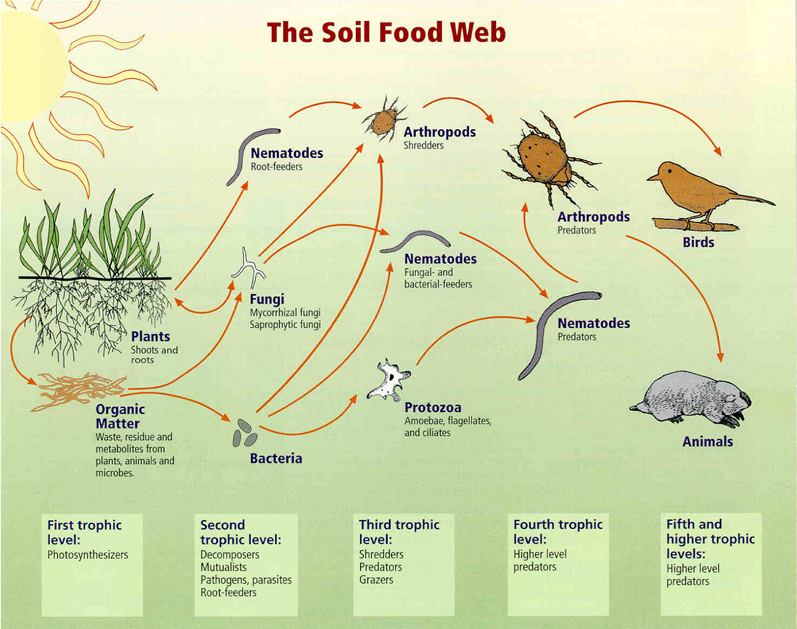
Fall is a great time to think about improving your soil’s health. We have all kinds of great resources at our finger tips this time of the year including leaf mulch, moisture, aged compost (hopefully you’ve been working on this), and cover crops.
This is the time of year when your trees and perennial shrubs put their energy into their root systems. They have just spent the last growing season using up many of the nutrients in the soil they are growing in. In the natural world, say an established forest, the natural cycles of nature would work to replenish that soil, through the breakdown of fallen organic matter, bird droppings, insect digestion and decay, fungal activity, and much more.
In our human-created worlds, we have to help that soil out a little bit unless you have an established forest garden system that mimics natural cycles, which most people do not. We do this by adding organic & natural materials, as well as other amendments during this time of year.
Here are a few things you can do to build the health of your soil:
- Add compost – Good aged compost, done right, will introduce beneficial bacteria and fungi to your soil. They in turn will work for you to break down organic matter in the soil including leaf mulch laid on top of the soil. Keep working on your compost pile to build new material for next year.
- Plant a cover crop – This is easy. All you have to do is throw down some Winter Rye, Austrian Winter Peas, Winter Barley, etc, let it grow through the winter, and turn it under in the spring. Walla, you now have nitrogen enriched soil. Cover cropping speeds infiltration of excess surface water, de-compacts your soil, adds organic matter, and enhances nutrient cycling.
- Sheet mulch – This is a great method for starting a new garden area, or building the soil in an existing area and getting rid of weeds. Worms love it! It can be done many different ways, but a simple one that works is laying down a layer of cardboard or newspaper and covering it 6” to 8” deep with leaf mulch, tree trimmings, grass clippings, plant clippings, compost, or any other type of organic matter that will be broken down over the course of the winter. As long as the soil is not frozen or too cold, worms will come to the surface to draw this organic matter down into the soil. Other critters will then join in to break it down and turn it into available nutrients for next spring’s plants. If you add a little manure to that mix, the process accelerates. Worms love manure and they love wet cardboard or newspaper. All winter long, you can compost with your kitchen scraps by putting them under your sheet mulch project.
Fall and winter is the best time to build your soil’s health because that’s when and where the action is. There’s not much going on up top during this time of the year unless you’re in a tropical climate.
Start building your soil’s health now, and you will be quite happy come spring because it will bring you better plant growth with fewer disease and insect problems.
If you want to be inspired, here are some cool sites to check out:
- http://urbanhomestead.org
- http://www.soilfoodweb.com/Home_Page.html

Jaque Christo says
Thank you for the post on improving the health of your soil. I like the idea to add compost to your soil. It adds bacteria and fungi that your soil then uses to help keep your plants healthy and full of life.
Tree Services Bloomington says
I love the sheet mulch idea! Is it only applicable to new gardens? Can you use this technique for soil maintenance?
ashley says
Absolutely – just don’t cover up dormant plants with the layers of mulch or they could have trouble breaking through. Sheet mulch around existing plants, and you’ll be giving them serious long-lasting nutrition as the mulch breaks down over subsequent months.
michael jordon says
Great Post